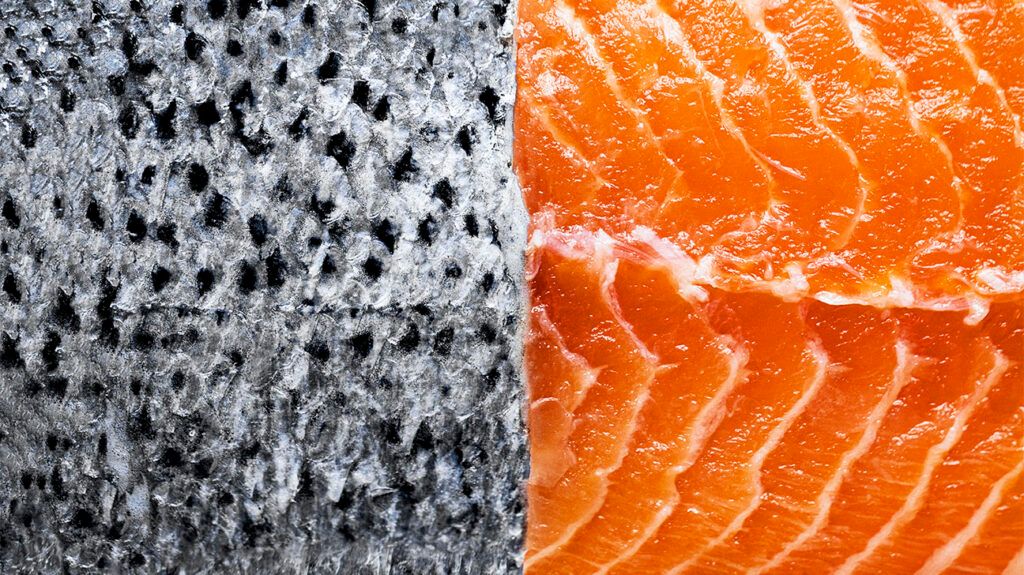Salmon is an oily fish rich in many essential nutrients, including Omega-3 fatty acids, selenium, and vitamin B12. When consumed as part of a balanced diet, these nutrients can help support overall health.
This article provides a nutritional breakdown of salmon and an in-depth look at its possible health benefits, how to incorporate more salmon into your diet, and any potential health risks of consuming salmon.

Consuming salmon as part of a balanced diet and healthy lifestyle may help decrease the risk of obesity, diabetes, and heart disease. Dietary intake of salmon also supports healthy cholesterol levels.
Heart health
There may be a positive connection between Omega-3 fatty acids and cardiovascular health.
Thyroid disease
Salmon is a good source of selenium, a mineral that can help support thyroid function. Maintaining adequate selenium levels may help promote thyroid health and lower the risk of thyroid disease.
A 2023 review suggested that selenium supplementation can benefit thyroid health in those with existing thyroid dysfunction. However, researchers noted that evidence to this effect is currently lacking, and further study is necessary to fully assess the effects of selenium supplementation in this area.
Mental benefits
Salmon may benefit the brain and cognitive processes.
A 2022 review found a correlation between Omega-3 intake and improvements in learning, memory, and cognitive well-being. Researchers suggest that deitary intake of Omega-3 should be promoted for overall health, and supplementation recommended in those with low intakes.
Salmon contains a wide range of nutrients that can support overall health.
Farm-raised salmon
100 grams (g) of raw farm-raised salmon contains
- 203 calories
- 13.1 g of fat
- 0 g of carbohydrate
- 20.3 g of protein
The same amount of cooked Atlantic salmon also provides:
- calcium
- iron
- magnesium
- potassium
- selenium
- vitamin B12
Wild salmon
Wild salmon is typically more nutrient-dense than farmed salmon. 100 g of wild salmon
- 136 calories
- 4.94 g of fat
- 0 g of carbohydrate no
- 22.3 g of protein
Salmon also contains cholesterol. The cholesterol content of foods does not necessarily increase levels of harmful cholesterol in the body.
Saturated fat and trans fat intake is more directly related to an increase in harmful cholesterol levels, and salmon is not a significant source of either. Fish and shellfish are especially important for providing omega-3 fatty acids. These are found in few other food groups.
Salmon can easily replace less healthy options in a meal as the main source of protein.
Here are some quick, tasty tips on working more salmon into your diet:
- Use salmon as a main source of protein.
- Add salmon to pasta or rice dishes.
- Mince salmon to top salads.
- Make salmon patties or burgers.
- Substitute chicken salad for salmon salad.
Fish and other seafood may contain low levels of mercury and pollutants. There is a low risk that excess consumption of contaminant-containing items may lead to adverse health effects. However, eating salmon in moderation as part of a balanced diet is unlikely to lead to such complications.
Foods that are potentially high in mercury can be harmful to pregnant people and moderation is advised. It is important to note that a person’s total diet or overall eating pattern is the most important factor for disease prevention. A varied diet is more beneficial to good health than concentrating on individual foods.
Salmon is a good source of many healthy nutrients including Omega-3 fatty acids, protein, potassium, selenium, and vitamin B12. It can be a great addition to a healthy, balanced diet.


